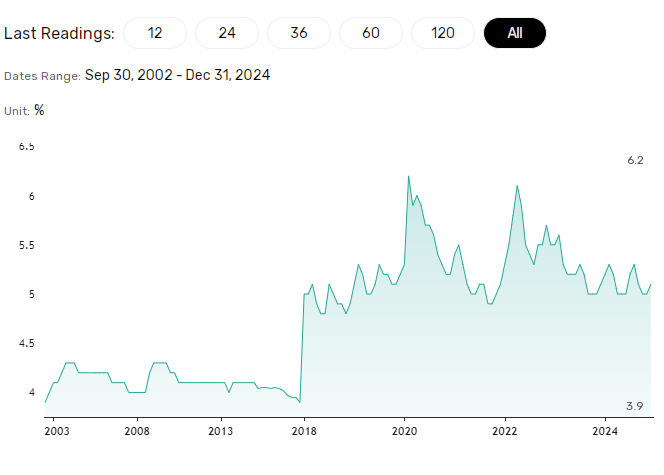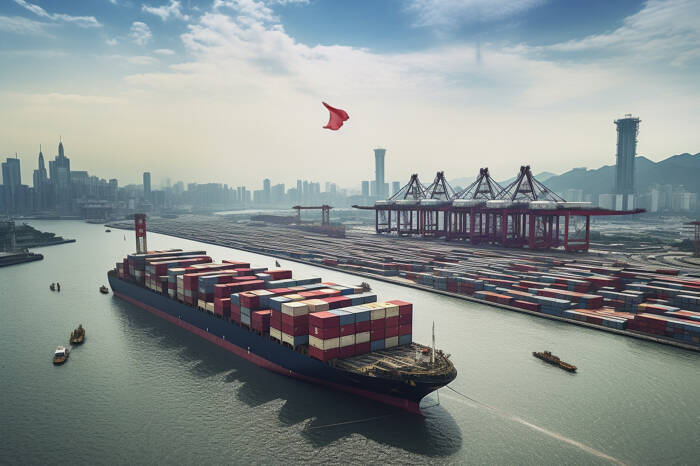“US-China tariff twists spark market uncertainty as Trump targets new trade policies.”, — write: www.fxempire.com
- US-China tariff talks intensify as Trump plans 10% tariffs amid rising trade tensions.
- Beijing faces pressure to shift toward consumption-driven growth amid US protectionism.
- IMF forecasts China’s growth to slow to 4.6% in 2025, citing trade policy uncertainties.

In this article:
President Trump’s pre-inauguration call with China’s Premier Xi Jinping had fueled optimism that the two leading global economies could avert a trade war.
“Tariff Man forgot his tariffs! Trump clearly looking for a grand bargain with China to which nobody else is invited.”
However, ‘on January 22, refocused on China and reportedly announcing plans for 10% tariffs on China, effective February 1. China’s latest trade data likely added pressure, with the total value of imports and exports surpassing CNY 4 trillion for the first time. Its trade surplus with the US widened to $361 million in 2024, driven by rising exports to the US and declining imports from the US.
Is China Progressing toward a Consumption Economy? President Trump’s tariff maneuvers emphasize the urgency for China to accelerate its transition to a consumption-driven economy. Export-reliant economies could experience heightened uncertainty amid rising US protectionism. A greater focus on domestic demand could help Beijing achieve sustainable growth.
On Wednesday, January 22, East Asia Econ, a research service, remarked on recent consumption trends, saying,
“Official data don’t suggest weak consumption. The household survey suggests it is back at the pre-COVID trend, and rose relative to GDP in 2024. Retail sales don’t show this strength because of rising spending on services. The chart clearly reflects an improvement. However, household consumption continues to languish below pre-Global Financial Crisis levels, the boom days of China’s economy.”

Government stimulus measures, such as the January 20 trade-in policy for electronics, aim to bolster consumer spending. The effectiveness of these policies will determine whether Beijing introduces additional incentives to stimulate demand.
China’s Labor Market Crucial to Consumption Outlook Household income and labor market conditions will be key to boosting consumer sentiment and spending. In 2024, the average year-end bonus of Chinese employers reportedly decreased by around 30% vs. 2022. The pullback in wages reflected higher unemployment, potentially impacting consumption growth.
Meanwhile, China’s unemployment rate climbed to 5.1% in December 2024, up from 5.0% in the previous month. Although below the February 2020 peak of 6.2%, rising unemployment underscores the challenges in boosting wages and supporting consumption. Before the global financial crisis, the unemployment rate hovered around 4%.

“China’s growth momentum might be sustained in the first three months of this year. This is partly because exports are expected to be strong as companies try to front-load shipments abroad to avoid new tariffs introduced by the incoming Trump administration. But uncertainties surround China’s export performance amid rising geopolitical tensions.”
Despite China’s economy expanding by 5.4% year-on-year in Q4 2024, the International Monetary Fund (IMF) projects China’s economy to grow by 4.6% in 2025. The IMF cited trade policy uncertainty contributing to a weaker outlook. Greater reliance on consumption through services and retail sales could prove crucial in 2025.
Hong Kong and Mainland China Markets Under Pressure It has been a gloomy start to 2025 for Hong Kong’s Hang Seng Index and the Mainland China equity markets.
Uncertainties toward US-China relations and Beijing’s ability to transition toward a consumption economy impacted market trends. In January 2025, the Hang Seng Index was down 1.35%, while the CSI 300 has fallen 2.60%.


Explore expert forecasts on US-China trade and further insights into China’s economy, the Hang Seng Index, and global markets here.
About the Author
With over 20 years of experience in the finance industry, Bob has been managing regional teams across Europe and Asia and focusing on analytics across both corporate and financial institutions. Currently he is covering developments relating to the financial markets, including currencies, commodities, alternative asset classes, and global equities.






Advertisement
